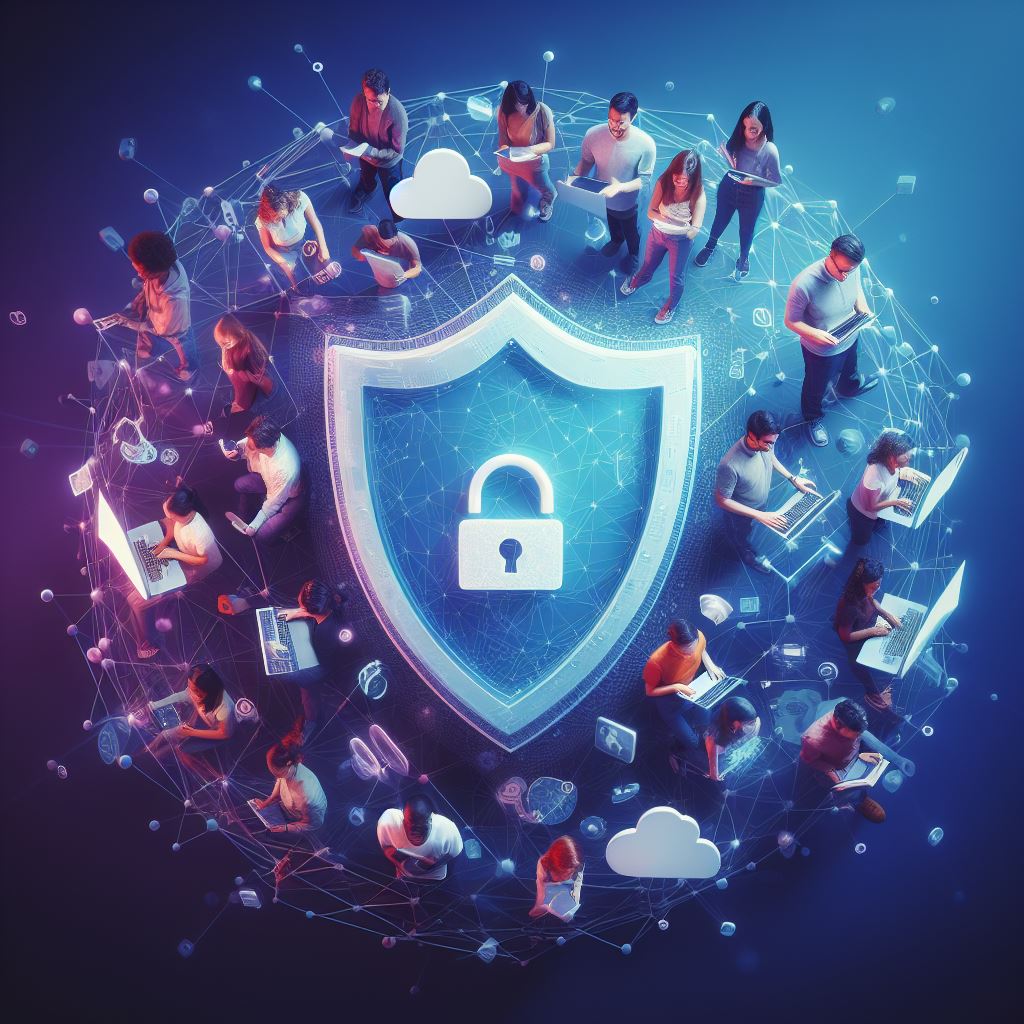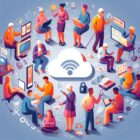Securing Internet Access Through Lifeline Assistance

Are you struggling to afford internet access? Don’t worry, there’s a solution. With Lifeline Assistance, you can secure affordable internet access and stay connected to the digital world.
In this article, we will guide you through the eligibility requirements, application process, and the benefits of Lifeline Assistance for internet access. We will also provide you with tips on how to maximize the benefits and highlight the available internet service providers.
Don’t let financial constraints limit your online presence. Let’s explore the possibilities together.
Key Takeaways
- Lifeline Assistance provides an opportunity for eligible individuals and households to access affordable internet service.
- The program aims to bridge the digital divide and promote digital inclusion by offering internet access to low-income individuals.
- Eligibility for Lifeline Assistance is determined by factors such as household income, enrollment in government assistance programs, and residing on tribal lands.
- To maximize the benefits of Lifeline Assistance, individuals should research and compare available internet service providers, utilize educational resources, and take advantage of additional features offered by ISPs.
Eligibility Requirements for Lifeline Assistance
To qualify for Lifeline Assistance, you must meet the eligibility requirements set by the program. These requirements are in place to ensure that the limited resources are allocated to those who truly need them.
First and foremost, you must have a household income at or below 135% of the Federal Poverty Guidelines. This criterion ensures that the program benefits those who are economically disadvantaged.
Additionally, you may qualify if you or someone in your household is currently enrolled in certain government assistance programs, such as Medicaid, Supplemental Nutrition Assistance Program (SNAP), or Federal Public Housing Assistance. These programs serve as indicators of financial need.
Furthermore, if you reside on tribal lands, you may also qualify for Lifeline Assistance.
It’s important to note that Lifeline Assistance is limited to one per household, and you can’t receive multiple discounts from different providers.
To verify your eligibility, you’ll need to provide documentation, such as proof of income or participation in a qualifying program.
Meeting these eligibility requirements will allow you to access the benefits of Lifeline Assistance.
How to Apply for Lifeline Assistance
To apply for Lifeline Assistance, you need to follow a simple process.
First, you must determine if you meet the eligibility requirements. As discussed in the previous section, eligible individuals include those who participate in certain government assistance programs such as Medicaid, Supplemental Nutrition Assistance Program (SNAP), Federal Public Housing Assistance (FPHA), and more.
Once you have confirmed your eligibility, you can proceed with the application.
To apply for Lifeline Assistance, you can either complete an online application or submit a paper application by mail. The online application is the most convenient option, as it allows you to apply from the comfort of your home. You’ll need to provide personal information such as your name, address, date of birth, Social Security Number, and proof of eligibility. The application process typically takes around 10 to 15 minutes to complete.
If you prefer to submit a paper application, you can download the form from the Lifeline Support website or request a copy to be mailed to you. Fill out the form with accurate and up-to-date information, and include any required documents to prove your eligibility.
After submitting your application, it will be reviewed by the Lifeline Support Center to ensure all information is accurate and complete. If approved, you’ll receive a notification and be enrolled in the Lifeline Assistance program.
Applying for Lifeline Assistance is a straightforward process that allows eligible individuals to access affordable internet services. By following the steps outlined above, you can successfully apply for Lifeline Assistance and enjoy the benefits of internet access.
Benefits of Lifeline Assistance for Internet Access
Experience the empowerment of affordable internet access through Lifeline Assistance.
Lifeline Assistance, a government program, offers numerous benefits for individuals and families who qualify. By providing financial support, Lifeline Assistance ensures that low-income households have access to essential communication services, including internet access.
One of the key benefits of Lifeline Assistance for internet access is the ability to stay connected with the digital world. In today’s society, the internet plays a vital role in various aspects of life, such as education, employment, healthcare, and communication. With Lifeline Assistance, individuals can access online resources, search for job opportunities, communicate with their loved ones, and even stay updated with important news and information.
Another significant benefit is the improvement in educational opportunities. With internet access, students can engage in online learning, research academic materials, and communicate with their teachers and classmates. This enables them to access a wealth of educational resources that can enhance their learning experience and improve their academic performance.
Furthermore, Lifeline Assistance for internet access promotes digital inclusion and equal opportunities. It helps bridge the digital divide by making internet access more affordable and accessible for low-income individuals and families. By leveling the playing field, Lifeline Assistance ensures that everyone has a fair chance to participate in the digital economy, access online services, and stay connected with the world.
Available Internet Service Providers Through Lifeline Assistance
You can choose from a variety of internet service providers when utilizing Lifeline Assistance for internet access. Here are some options available to you:
- National Providers: These are large-scale internet service providers that offer coverage across multiple states. Examples include AT&T, Verizon, and Comcast. They typically offer a range of plans and speeds to meet different needs and budgets.
- Regional Providers: These providers operate in specific regions or states and may offer more localized coverage. Examples include CenturyLink and Cox Communications. They may have specialized plans or pricing options tailored to the communities they serve.
- Wireless Providers: Some internet service providers offer wireless options for internet access. These providers use cellular networks to deliver internet service. Examples include T-Mobile and Sprint. Wireless plans can be particularly useful in areas where wired connections are limited or unavailable.
- Satellite Providers: Satellite internet providers use satellites in space to deliver internet service to remote or rural areas. Examples include HughesNet and Viasat. Satellite internet may have higher latency and slower speeds compared to wired or wireless options, but it can be a lifeline for those in areas without other internet infrastructure.
Remember to consider factors such as coverage, speed, reliability, and cost when choosing an internet service provider through Lifeline Assistance. It’s essential to find an option that meets your specific needs and provides reliable internet access.
Tips for Maximizing the Benefits of Lifeline Assistance for Internet Access
Make the most of Lifeline Assistance for internet access by optimizing its benefits. Here are some tips to help you maximize the advantages of this program.
First, determine your internet needs. Assess how much data you require and the speed necessary to carry out your online activities. This will help you select the most suitable plan offered by the Lifeline Assistance program.
Next, research the available internet service providers (ISPs) and compare their packages. Look for ISPs that are reliable, offer good customer service, and have positive user reviews. Take advantage of any additional features or perks that the ISPs may provide, such as free Wi-Fi hotspots or antivirus software.
It’s also important to utilize the educational resources and digital literacy training that may be offered through the Lifeline Assistance program. This will help you make the most of your internet access by enhancing your digital skills and knowledge.
Lastly, regularly monitor your internet usage to avoid exceeding your data limit and incurring extra charges. By following these tips, you can make the most of Lifeline Assistance for internet access and fully utilize its benefits.
Frequently Asked Questions
How Much Does Lifeline Assistance for Internet Access Cost?
Lifeline assistance for internet access costs vary depending on your eligibility and the provider you choose. It’s a government program aimed at making internet access more affordable for low-income individuals and families.
Can I Apply for Lifeline Assistance if I Already Receive Government Assistance?
Yes, if you already receive government assistance, you can apply for Lifeline assistance. It provides a discount on internet access to eligible low-income individuals. Don’t miss out on this opportunity to stay connected.
Is There a Limit to the Amount of Data or Internet Speed Provided Through Lifeline Assistance?
There is no limit to the amount of data or internet speed provided through Lifeline assistance. You can access the internet without worrying about restrictions, ensuring you have the necessary resources for your needs.
Can I Switch Internet Service Providers While Receiving Lifeline Assistance?
Can you switch internet service providers while receiving lifeline assistance? Yes, you can switch providers. However, it is important to research and compare options to ensure you maintain access to affordable and reliable internet service.
Are There Any Additional Fees or Hidden Costs Associated With Lifeline Assistance for Internet Access?
There are no additional fees or hidden costs associated with lifeline assistance for internet access. This program is designed to provide affordable access to eligible individuals, ensuring that they have the resources they need.



